Your cart is currently empty!
Blog
Which Skin Concerns Can Be Treated with Skin Rejuvenation?
Skin rejuvenation has become an increasingly popular field within cosmetic and dermatological treatments, offering solutions to a broad range of skin concerns. Whether you’re looking to reverse the signs of ageing, improve the texture of your skin, or reduce the appearance of blemishes and scars, there is likely a skin rejuvenation treatment that can help. In this article, we’ll explore the various skin concerns that can be effectively treated with skin rejuvenation procedures, the types of treatments available, and who they may be suitable for.
What Is Skin Rejuvenation?
Skin rejuvenation refers to a collection of cosmetic procedures designed to improve the appearance, health, and texture of the skin. These treatments can be non-invasive or minimally invasive and often involve little to no downtime. The goal of skin rejuvenation is to enhance the skin’s overall radiance, smoothness, and clarity by addressing specific concerns that develop due to age, sun exposure, lifestyle, or underlying conditions.
Common Skin Concerns Treated by Skin Rejuvenation
Fine Lines and Wrinkles
Fine lines and wrinkles are among the most common reasons people seek skin rejuvenation. As we age, our skin produces less collagen and elastin, leading to the formation of creases and sagging.
Treatments that help:
- Laser resurfacing stimulates collagen production and tightens the skin.
- Microneedling promotes natural healing and collagen synthesis.
- Anti-wrinkle injections reduce the appearance of expression lines by relaxing underlying muscles.
These treatments can soften existing lines and slow the development of new ones, offering a more youthful and rested appearance.
Sun Damage and Pigmentation
Australia’s high UV index means sun damage is a significant concern for many. Prolonged sun exposure can lead to pigmentation issues such as sunspots, freckles, and uneven skin tone.
Treatments that help:
- Intense Pulsed Light (IPL) therapy targets discoloured skin and breaks down excess pigment.
- Chemical peels exfoliate the outer layer of skin, reducing pigmentation.
- Laser treatments like Q-switch or fractional laser can target deeper pigmentation.
By removing or dispersing pigmented cells, these treatments promote a more even complexion and reduce visible sun damage.
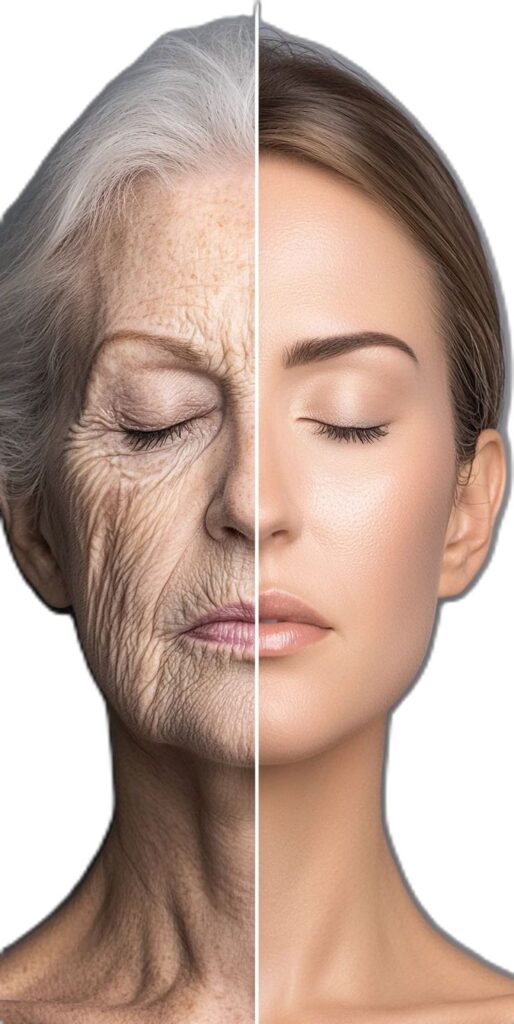
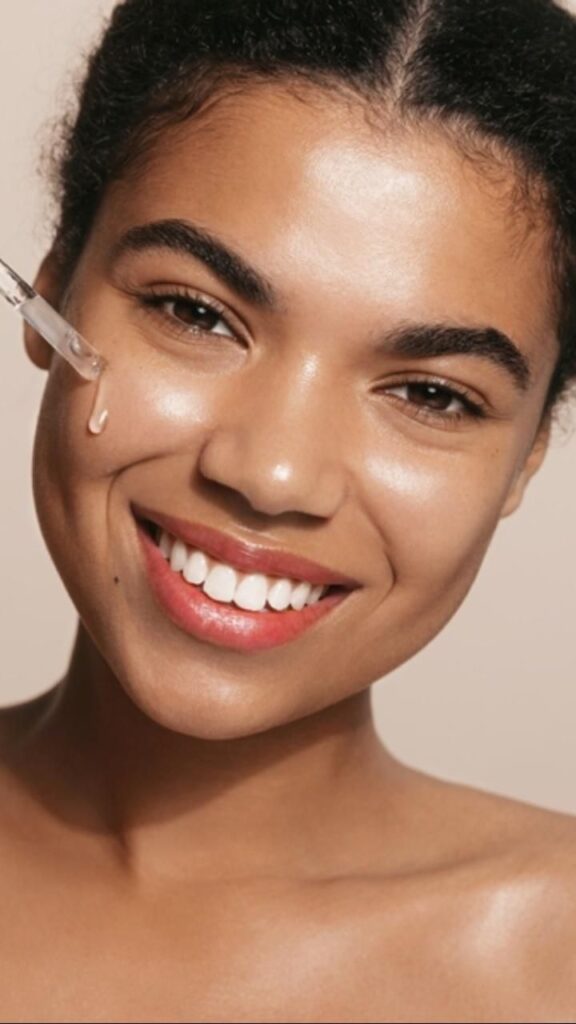
Acne Scars
Active acne can be distressing, but lingering scars can have a long-term impact on skin confidence. Acne scars can be pitted (atrophic) or raised (hypertrophic), and their treatment requires targeted strategies.
Treatments that help:
- Microneedling with or without radiofrequency can help remodel scar tissue.
- Fractional CO2 laser is particularly effective for deeper scars.
- Chemical peels can reduce surface irregularities.
- Subcision may be used for tethered scars in combination with other methods.
The right combination of treatments can significantly reduce the visibility of acne scarring over time.
Uneven Skin Texture
Rough, bumpy, or uneven skin texture is often caused by dead skin buildup, enlarged pores, or previous skin damage. This concern can make makeup sit poorly and cause skin to appear dull or tired.
Treatments that help:
- Microdermabrasion gently exfoliates the top layer of skin for a smoother surface.
- HydraFacial combines cleansing, exfoliation, and hydration to refresh skin texture.
- Chemical peels and laser resurfacing can reduce rough patches and improve skin feel.
Improving texture helps create a more luminous, soft, and refined appearance
Enlarged Pores
Enlarged pores are commonly found on the nose, cheeks, and forehead and can be a result of excess oil, ageing, or sun damage.
Treatments that help:
- Microneedling and fractional laser tighten the surrounding skin and reduce pore size.
- Chemical peels exfoliate the skin, helping to unclog and refine pores.
- Topical treatments containing retinoids or AHAs/BHAs can be used alongside clinical options.
By tightening the skin and clearing out debris, these treatments can make pores less noticeable.
Redness and Rosacea
Rosacea, broken capillaries, and general facial redness can be challenging to manage with skincare alone. These issues often require energy-based treatments for optimal results.
Treatments that help:
- IPL therapy targets vascular lesions and helps reduce redness.
- Laser treatments like vascular laser are effective for broken capillaries.
- LED light therapy (particularly red or blue light) may help calm inflammation and support skin healing.
While rosacea cannot be cured, these therapies can significantly reduce flare-ups and improve skin tone.
Dehydrated or Dull Skin
Lifestyle factors like stress, poor diet, and lack of sleep can leave the skin looking tired and dehydrated. Ageing also reduces the skin’s natural ability to retain moisture.
Treatments that help:
- HydraFacial infuses the skin with hydration and antioxidants.
- LED therapy encourages cell regeneration and hydration.
- Bioremodelling injections (e.g. hyaluronic acid-based) can deeply hydrate and plump the skin.
Replenishing moisture and restoring skin vitality helps promote a healthy glow.
Loose or Sagging Skin
Skin laxity can result from natural ageing, weight loss, or reduced collagen. It often affects areas such as the jawline, neck, and cheeks.
Treatments that help:
- Radiofrequency (RF) skin tightening stimulates collagen and elastin production.
- Ultrasound therapy (e.g. Ultherapy) targets deeper tissue layers to lift and tighten.
- Microneedling with RF is another effective combination for mild to moderate sagging.
These non-surgical options offer gradual firming without significant downtime.
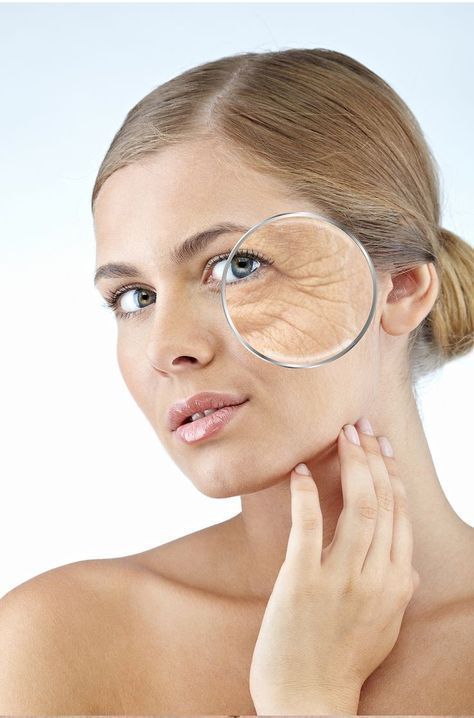
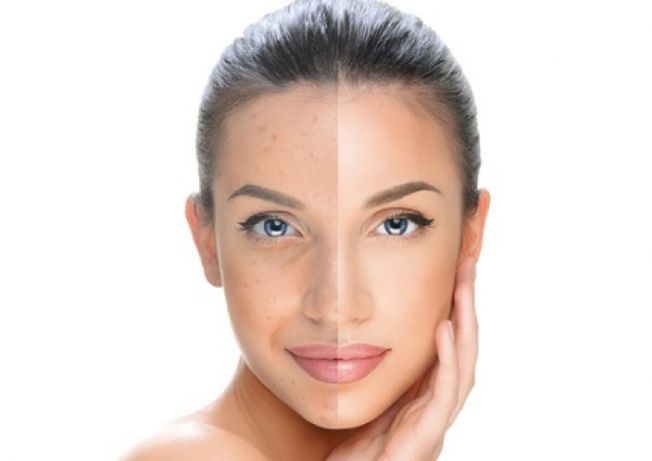
Melasma
Melasma is a type of pigmentation disorder that often appears as patchy brown or grey marks on the face. It can be triggered by hormones, sun exposure, or skin trauma.
Treatments that help:
- Topical lightening agents (like hydroquinone or tranexamic acid)
- Chemical peels tailored for pigmentation
- Low-energy laser therapy (e.g. Pico or Q-switch lasers)
Melasma is a stubborn condition, but with a consistent treatment plan and sun protection, it can be managed effectively.
Choosing the Right Treatment
Not every treatment is suitable for everyone. The most effective skin rejuvenation plans are those that are tailored to your skin type, condition, and concerns. In Melbourne, qualified skin therapists and dermatologists can assess your needs and recommend a treatment or combination of treatments suited to you.
Factors considered include:
- Skin type (especially important for those with darker complexions)
- Severity of the concern
- Lifestyle and availability for downtime
- Medical history and skin sensitivity
Combining Treatments for Better Results
In many cases, a combination approach delivers the best outcomes. For example:
- A person with sun damage and fine lines might benefit from both laser therapy and a course of chemical peels.
- Someone with acne scarring and large pores could see improvement with microneedling and radiofrequency.
Clinics often offer skin packages that combine treatments over several sessions for a comprehensive rejuvenation strategy.

Is Skin Rejuvenation Worth It?
For those wanting to improve the appearance and health of their skin without undergoing surgery, skin rejuvenation offers a flexible and effective solution. It’s particularly popular in Melbourne, where residents are often exposed to harsh environmental conditions like strong UV radiation, which contributes to premature skin ageing and pigmentation.
With an array of evidence-based options available across reputable Melbourne clinics, you can safely address your skin concerns and feel more confident in your skin.
Final Thoughts
Skin rejuvenation treatments can address a wide variety of concerns—from wrinkles and pigmentation to texture and hydration—making them a valuable tool in both aesthetic and therapeutic skin care. Whether your goal is to restore a youthful glow, correct long-standing skin issues, or simply feel more comfortable in your skin, there’s likely a treatment out there that can help.
Before starting, consult with a qualified skincare professional to ensure you choose the right option for your skin goals and health. With the right approach, skin rejuvenation can not only improve how your skin looks but also how you feel about it.
At Medix Clinic, we offer a comprehensive range of skin and cosmetic treatments tailored to your needs. Our services include acne scarring in Melbourne, scar treatment in Melbourne, and radio frequency microneedling in Melbourne to promote skin repair and regeneration. We also provide professional skin needling in Melbourne, advanced skin tightening in Melbourne, and effective skin tag and mole removal in Melbourne. For pigmentation issues, we offer targeted pigmentation removal in Melbourne, and to restore your skin’s glow, we specialise in skin rejuvenation in Melbourne. Additionally, you can enhance your smile with our safe and effective LED teeth whitening in Melbourne
What Types of Pigmentation Can Be Treated?
Pigmentation is one of the most common skin concerns among Australians, affecting people of all ages, skin types, and ethnic backgrounds. Whether it presents as freckles, sun spots, melasma or scarring, pigmentation can impact skin tone and texture, often leading to a loss of confidence. The good news? Many types of pigmentation can be effectively treated — especially with the advances in modern dermatology and skin care.
In this article, we explore the most common types of pigmentation, what causes them, and which treatments are typically used to reduce or remove them safely and effectively. Understanding the different categories of pigmentation is essential for selecting the right treatment approach tailored to your individual skin type and condition.
What Is Pigmentation?
Pigmentation refers to the colouring of the skin, which is primarily determined by a pigment called melanin. Produced by specialised skin cells called melanocytes, melanin helps protect our skin from UV damage. However, when melanin production becomes uneven, it can result in hyperpigmentation (dark patches) or hypopigmentation (light patches).
This article focuses on hyperpigmentation, which is more commonly treated in cosmetic clinics and dermatology practices.
Common Types of Pigmentation That Can Be Treated
Let’s take a closer look at the main forms of pigmentation that can be treated and what causes them.
Sunspots (Solar Lentigines)
Description:
Sunspots, also known as age spots or liver spots, are flat brown or black patches that appear on sun-exposed areas such as the face, shoulders, arms and hands. They typically develop with age and cumulative sun exposure.Causes:
- Chronic UV exposure
- Skin ageing
- Outdoor lifestyle without adequate sun protection
Who’s Affected:
Common in fair-skinned individuals over the age of 40, but can affect younger Australians with frequent sun exposure.Treatments:
- Laser therapy (e.g. Q-switched, IPL)
- Chemical peels (glycolic acid, TCA)
- Cryotherapy
- Topical agents (retinoids, hydroquinone, vitamin C)
Can it be treated?
Yes – sunspots generally respond well to treatment and are among the most successfully removed pigmentations.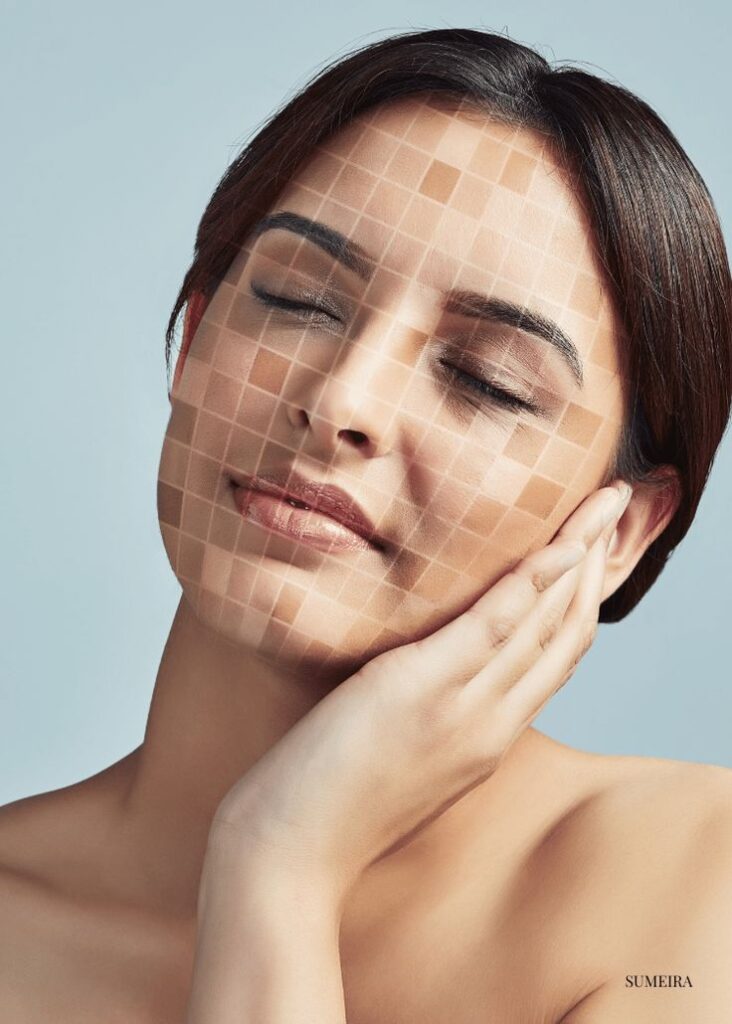
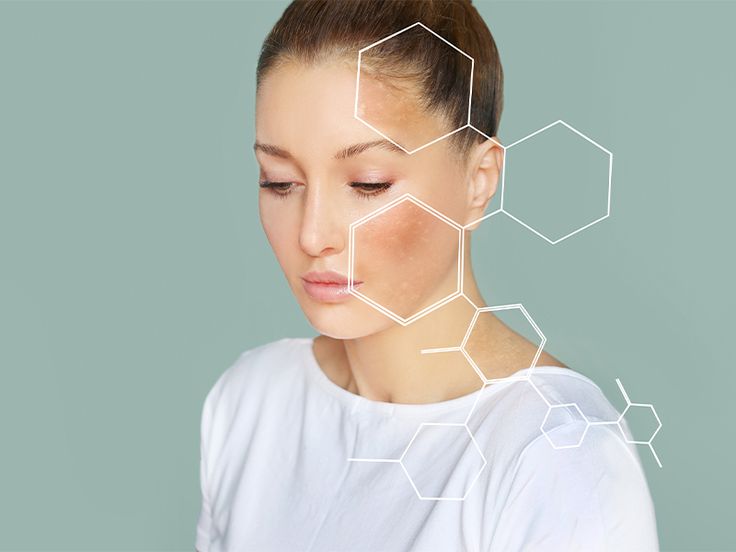
Melasma
Description:
Melasma appears as symmetrical patches of brown or greyish pigmentation, typically on the cheeks, forehead, upper lip and chin.Causes:
- Hormonal fluctuations (pregnancy, contraceptive pills, HRT)
- UV exposure
- Genetic predisposition
Who’s Affected:
Predominantly affects women (especially during or after pregnancy) and those with medium to darker skin tones (Fitzpatrick Types III–VI).Treatments:
- Topical treatments (azelaic acid, tranexamic acid, hydroquinone, vitamin C)
- Gentle chemical peels (mandelic, lactic acid)
- Laser therapy (low-energy pico or Q-switched lasers, with caution)
- Sun protection (absolutely essential for managing melasma)
Can it be treated?
Yes, but melasma is stubborn. It requires a careful, long-term approach with ongoing maintenance, and it can recur with sun exposure or hormonal changes.Post-Inflammatory Hyperpigmentation (PIH)
Description:
PIH is darkening of the skin that occurs after inflammation or injury, such as acne, eczema, burns, or even aggressive skin treatments.Causes:
- Skin trauma or irritation
- Acne breakouts
- Infections or rashes
- Friction or scratching
Who’s Affected:
All skin types, but more common and more pronounced in people with darker skin tones (Fitzpatrick IV–VI).Treatments:
- Topical agents (retinoids, vitamin C, azelaic acid)
- Gentle chemical peels
- Microneedling with pigment-reducing serums
- Low-energy laser treatments (only by experienced professionals)
Can it be treated?
Yes – with the right approach, PIH can fade significantly over time. However, treating the underlying cause (e.g. acne) is essential to prevent recurrence.Freckles (Ephelides)
Description:
Freckles are small, flat brown spots typically found on the face, shoulders and arms. They become more prominent with sun exposure and may fade in winter.Causes:
- Genetics
- UV exposure
Who’s Affected:
People with fair skin and red or light-coloured hair are more prone to developing freckles, especially during childhood.Treatments:
- Laser therapy (Q-switched or IPL)
- Cryotherapy
- Chemical peels
- Sun protection (to prevent new freckles)
Can it be treated?
Yes – freckles often respond very well to laser treatments. However, they may return with continued sun exposure if proper protection isn’t used.Pigmented Birthmarks
Description:
These are benign patches of excess pigment that appear at or shortly after birth. Common types include café-au-lait spots and congenital melanocytic naevi.Causes:
- Genetic factors
- Irregular clustering of melanocytes during development
Who’s Affected:
Can occur in people of all skin types.Treatments:
- Laser treatments (depending on depth and type of pigmentation)
- Monitoring by a dermatologist (especially for large or irregular birthmarks)
Can it be treated?
Sometimes – some birthmarks respond well to treatment, while others are more resistant. Treatment is often cosmetic unless there’s a medical concern.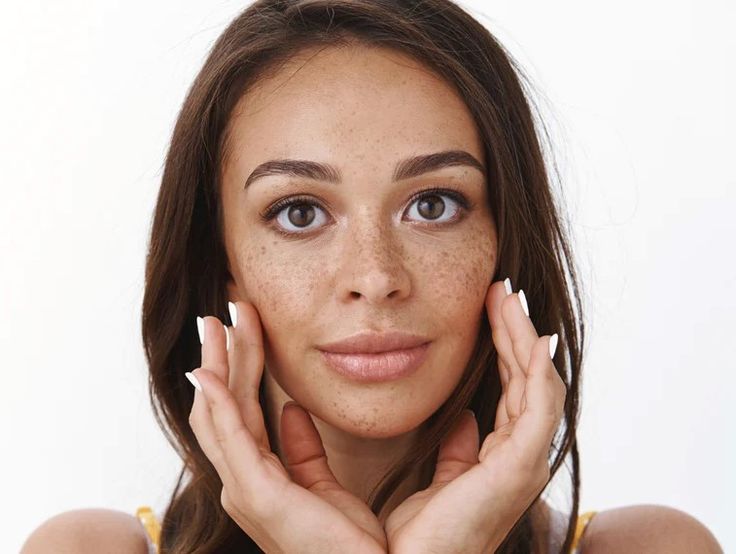
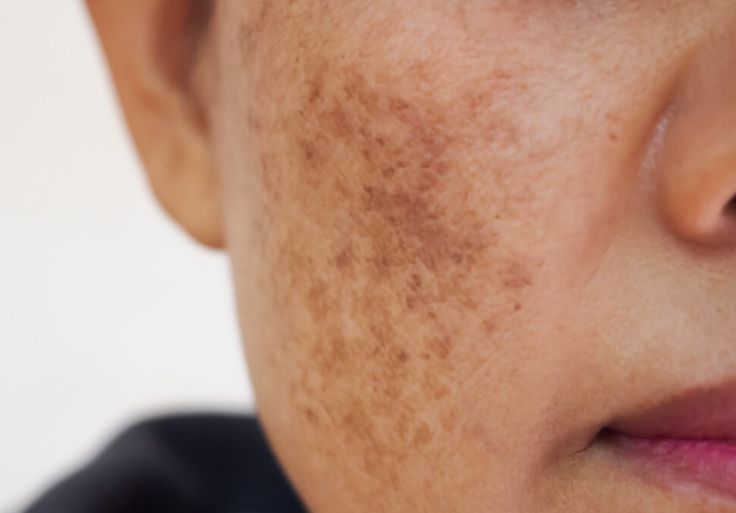
Pigmentation from Skin Conditions (e.g. Eczema or Psoriasis)
Description:
Dark patches may appear after inflammation caused by skin conditions like eczema or psoriasis. These areas may persist after the flare-up resolves.Causes:
- Chronic inflammation
- Skin barrier disruption
- Scratching or friction
Who’s Affected:
Anyone with a history of inflammatory skin conditions, particularly those with medium to darker skin tones.Treatments:
- Topical anti-inflammatories (under supervision)
- Skin-barrier repair and hydration
- Gentle brightening treatments (niacinamide, vitamin C)
- Laser therapy (with extreme care)
Can it be treated?
Yes, though it’s important to control the primary skin condition first to prevent further pigmentation.Drug-Induced Hyperpigmentation
Description:
Some medications can cause pigmentation changes as a side effect. These can appear as patches, spots, or even general darkening of the skin.Causes:
- Antibiotics (e.g. minocycline)
- Antimalarials
- Chemotherapy drugs
- Hormonal therapies
Who’s Affected:
People taking medications known to trigger pigment changes.Treatments:
- Discontinuation or substitution of the medication (under medical supervision)
- Topical depigmenting agents
- Laser therapy (if the pigment is superficial)
Can it be treated?
Sometimes – depends on whether the pigmentation is superficial or deep and if the causative medication can be safely stopped.What Affects Treatment Success?
The success of pigmentation treatment depends on several factors:
- Type and depth of pigmentation: Surface pigmentation is generally easier to treat than deep dermal pigmentation.
- Skin type: Darker skin types are more prone to post-treatment hyperpigmentation and need extra caution.
- Cause: Identifying and managing the underlying cause is critical for lasting results.
- Consistency and sun protection: Long-term results require strict sun protection and consistent use of recommended skincare products.
Australian regulations prioritise patient safety, and many reputable skin clinics tailor treatment plans to suit your Fitzpatrick skin type, lifestyle, and concerns. This includes patch testing, pre-treatment preparation, and aftercare support.
Always seek out clinics with experience in treating diverse skin tones and complex pigmentation issues. Be wary of cheap or unregulated treatments, which may lead to burns, scarring or worsening of the condition.
Final Thoughts: Treating Pigmentation Effectively
To answer the question — yes, many types of pigmentation can be treated, from sun-induced spots and melasma to acne scarring and freckles. The key is proper diagnosis, a tailored treatment plan, and ongoing commitment to maintenance and sun protection.
Pigmentation can be stubborn, but with the right professional guidance and modern technology, you can achieve clearer, more even-toned skin. If you’re considering treatment, start with a thorough skin consultation at a qualified clinic that understands both the science and the artistry of skin.
At Medix Clinic, we offer a comprehensive range of skin and cosmetic treatments tailored to your needs. Our services include acne scarring in Melbourne, scar treatment in Melbourne, and radio frequency microneedling in Melbourne to promote skin repair and regeneration. We also provide professional skin needling in Melbourne, advanced skin tightening in Melbourne, and effective skin tag and mole removal in Melbourne. For pigmentation issues, we offer targeted pigmentation removal in Melbourne, and to restore your skin’s glow, we specialise in skin rejuvenation in Melbourne. Additionally, you can enhance your smile with our safe and effective LED teeth whitening in Melbourne
Can Skin Tightening Help with Loose Skin After Weight Loss?
Achieving significant weight loss is a major milestone — one that takes commitment, time, and perseverance. However, many people who’ve shed the kilos are left with a common issue: loose or sagging skin. This can affect the abdomen, arms, thighs, face, and other parts of the body, impacting both appearance and self-confidence. The good news is that modern skin tightening treatments offer real hope. But can they truly help with loose skin after weight loss?
In this article, we’ll explore what causes post-weight loss skin laxity, the effectiveness of skin tightening procedures, available treatment options in Australia, and what you can realistically expect from them.
Why Does Loose Skin Occur After Weight Loss?
Skin is a remarkably elastic organ, but its ability to bounce back is not infinite. When the skin stretches to accommodate extra fat — especially over long periods — the collagen and elastin fibres can become damaged or overstretched.
After significant weight loss, particularly if it’s rapid or involves losing more than 15–20kg, the skin may not fully retract to your new shape. Factors influencing how much loose skin you end up with include:
- Age – Skin loses elasticity as we age.
- Amount and pace of weight loss – The quicker the weight loss, the less time the skin has to adapt.
- Duration of obesity – Long-term skin stretching is harder to reverse.
- Genetics and skin quality – Your body’s ability to regenerate collagen and elastin varies.
- Sun exposure – UV damage can further break down skin structure.
What is Skin Tightening?
Skin tightening refers to a range of non-surgical or minimally invasive treatments designed to firm up loose, sagging skin by stimulating collagen production, improving elasticity, and promoting natural skin regeneration.
These treatments are increasingly popular in Australia as they offer results without going under the knife. While they may not produce the same dramatic changes as surgical skin removal (like a tummy tuck), they can significantly improve skin firmness and texture.
Can Skin Tightening Help After Weight Loss?
Yes — to an extent. Skin tightening treatments can be very effective for mild to moderate skin laxity. They are less effective for extremely loose or excessive skin folds, which may require surgery. However, many patients report noticeable improvements in firmness, tone, and skin quality after non-surgical skin tightening procedures.
The key lies in choosing the right treatment based on your skin type, age, treatment area, and how much laxity is present.

Popular Skin Tightening Treatments in Australia
Here are some of the most sought-after non-surgical skin tightening options available in Australian clinics:
Radiofrequency (RF) Skin Tightening
Radiofrequency uses energy waves to heat the deep layers of the skin, triggering collagen and elastin production. This can improve firmness over time and works well for areas like the abdomen, thighs, and face.
- Best for: Mild to moderate skin laxity
- Sessions needed: 4–6 typically
- Downtime: Minimal
High-Intensity Focused Ultrasound (HIFU)
HIFU is a non-invasive treatment that delivers focused ultrasound energy beneath the skin to stimulate deep collagen production and skin tightening.
- Best for: Facial, neck, and décolletage skin tightening
- Sessions needed: 1–3 sessions
- Downtime: None
Fractional Radiofrequency Microneedling (e.g., Morpheus8)
This combines microneedling with RF energy to create controlled skin trauma and heat, promoting skin tightening and rejuvenation.
- Best for: Body and face tightening, especially post-weight loss
- Sessions needed: 3–4 sessions
- Downtime: 1–3 days
Plasma Fibroblast Therapy
This technique uses plasma energy to create small thermal injuries on the skin, triggering collagen regeneration and contraction of tissue.
- Best for: Small areas of loose skin
- Sessions needed: 1–2 sessions
- Downtime: 5–7 days of healing

Can These Treatments Replace Surgery?
Non-surgical skin tightening can’t remove excess folds of skin. If you’ve lost a substantial amount of weight (30kg+), especially if it was lost rapidly, surgery like a tummy tuck or body lift may be necessary to achieve the best aesthetic outcome.
However, if you’re in the early stages of weight loss or only dealing with mild sagging, skin tightening treatments can:
- Delay the need for surgery
- Improve your overall contour
- Tighten early laxity before it worsens
- Boost skin health and texture
Combining Skin Tightening with Other Treatments
For best results, skin tightening is often paired with other therapies to support collagen production and overall skin health. These may include:
- Collagen-stimulating injections (e.g., Sculptra)
- LED Light Therapy – for healing and rejuvenation
- Topical retinoids and vitamin C serums
- Body contouring with cryolipolysis (fat freezing)
What About Natural Skin Tightening?
Natural skin tightening is possible — to a point. While it won’t match clinical results, the following steps can support firmer skin:
- Hydration – Well-hydrated skin is more elastic.
- Strength training – Building muscle mass under the skin helps improve tightness.
- Balanced diet – Foods rich in collagen-boosting nutrients like vitamin C, zinc, and protein can help.
- Daily skincare – Using firming creams with retinoids or peptides may support skin health.
Are Skin Tightening Treatments Safe?
Yes — when performed by qualified professionals, these treatments are considered safe. Side effects are typically mild and may include:
- Redness
- Temporary swelling
- Mild discomfort or tingling
- Rarely, blistering or pigmentation changes (more common in darker skin tones)
Always ensure your practitioner is experienced, and your treatment is tailored to your specific skin type.

Accessibility in Melbourne & Other Australian Cities
Many clinics in Melbourne, Sydney, Brisbane, and Perth offer packages or discounts for multiple sessions.
When choosing a provider, consider:
- Credentials and experience
- Technology used
- Before-and-after photos
- Reviews and reputation
- Consultation availability
Who is a Good Candidate?
You may be an ideal candidate for skin tightening if you:
- Have mild to moderate loose skin
- Are in good overall health
- Maintain a stable weight
- Don’t want invasive surgery
- Have realistic expectations
Final Thoughts
Loose skin after weight loss is common, but it doesn’t have to define your journey. Skin tightening treatments offer a range of options — from gentle toning to deep collagen stimulation — helping you feel more confident in your body.
While results vary based on age, skin condition, and weight history, many Australians have seen meaningful improvements with non-surgical skin tightening.
If you’re unsure where to start, speak with a qualified aesthetic practitioner in your area. They can assess your skin, recommend the most suitable treatments, and guide you on your path to firmer, smoother skin — without the need for surgery.
At Medix Clinic, we offer a comprehensive range of skin and cosmetic treatments tailored to your needs. Our services include acne scarring in Melbourne, scar treatment in Melbourne, and radio frequency microneedling in Melbourne to promote skin repair and regeneration. We also provide professional skin needling in Melbourne, advanced skin tightening in Melbourne, and effective skin tag and mole removal in Melbourne. For pigmentation issues, we offer targeted pigmentation removal in Melbourne, and to restore your skin’s glow, we specialise in skin rejuvenation in Melbourne. Additionally, you can enhance your smile with our safe and effective LED teeth whitening in Melbourne
Can I Treat Old Acne Scars?
Introduction
If you’ve struggled with acne in the past, you’re not alone — and for many Australians, the battle doesn’t always end when the breakouts do. Old acne scars can linger for years, affecting self-confidence and skin texture. The good news? Thanks to advancements in dermatology and cosmetic treatments, old acne scars can be treated, improved, and in some cases, significantly faded.
This article explores everything you need to know about treating old acne scars in Australia — including the types of scars, the most effective treatments, what to expect, and how to prevent further damage.
What Are Old Acne Scars?
Acne scars form when inflamed blemishes damage the deeper layers of the skin. If your body doesn’t produce enough collagen during the healing process, or produces too much, you may end up with permanent textural changes. Old acne scars are simply scars that have been present for a year or more — often becoming more noticeable as skin loses elasticity with age.
Types of Acne Scars
Understanding the type of scar you have helps determine the best treatment approach. Common types include:
- Atrophic (Indented) Scars:
- Ice Pick Scars: Deep, narrow holes in the skin.
- Boxcar Scars: Wider depressions with sharp edges.
- Rolling Scars: Soft, shallow indents with sloping edges.
- Hypertrophic or Keloid Scars:
- Raised and thickened tissue that forms where the acne was.
- Post-Inflammatory Hyperpigmentation (PIH):
- Not technically a scar, but dark patches left behind after acne. PIH tends to be more common in darker skin tones.
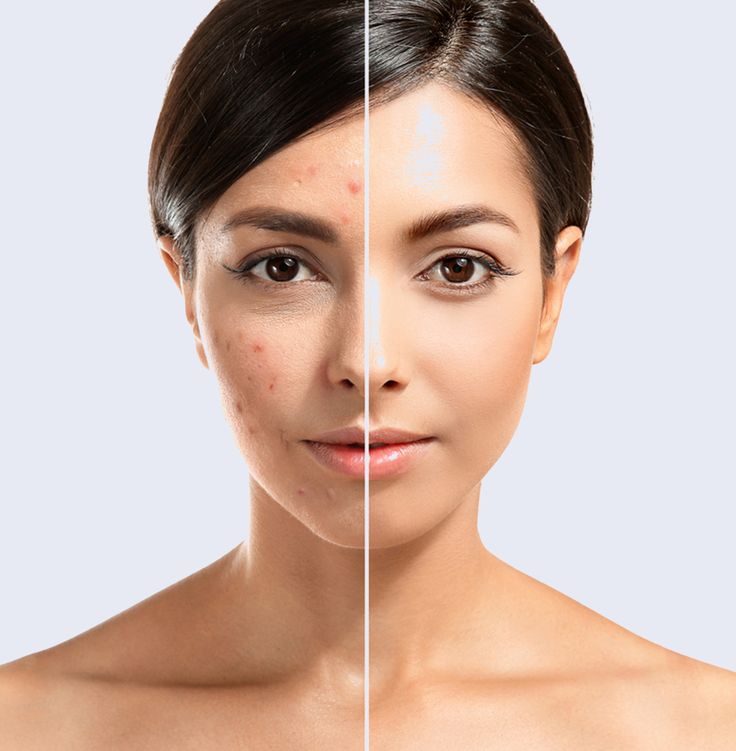
Can Old Acne Scars Really Be Treated?
Yes — even scars that are years or decades old can be treated. While complete removal isn’t always possible, dramatic improvements in texture, tone, and appearance are achievable. The key lies in choosing the right combination of professional treatments, ongoing skincare, and realistic expectations.
Most Effective Treatments for Old Acne Scars in Australia
Let’s take a look at some of the most popular and effective treatments available in Australia, offered by dermatologists, cosmetic clinics, and skin specialists.
Fractional Laser Resurfacing
This technology uses focused laser beams to remove damaged skin and stimulate collagen production. It’s especially effective for atrophic scars and uneven texture.
- Pros: Noticeable improvement after a few sessions
- Downtime: Moderate (3–7 days)
RF Microneedling (Radiofrequency Microneedling)
Combines micro-needles and radiofrequency energy to target deep layers of the skin, boosting collagen and tightening tissue.
- Pros: Improves skin firmness and scar depth
- Downtime: Mild to moderate
Chemical Peels
A chemical solution is applied to exfoliate damaged skin layers and reveal smoother, clearer skin underneath. Great for mild atrophic scars and pigmentation.
- Types: Glycolic acid, salicylic acid, TCA (trichloroacetic acid)
- Downtime: Varies by peel strength
Skin Needling / Dermarolling
This technique uses tiny needles to trigger skin repair and new collagen production. It’s a lower-cost, effective treatment for shallow scars and overall texture.
- Home vs. Professional: At-home devices have limited depth and results. In-clinic treatments are more effective.
Subcision
A minor surgical technique used to break fibrous scar tissue under the skin. Often used in combination with fillers or microneedling.
- Best for: Deep rolling scars
- Downtime: Bruising and swelling for a few days
- Performed by: Dermatologist or cosmetic doctor
Fillers
Dermal fillers can temporarily “lift” indented scars, making them appear less noticeable.
- Duration: 6–18 months
- Note: Best used with other treatments for long-term improvement
LED Light Therapy
While not a primary treatment, LED therapy (especially red and blue light) can support skin healing, reduce inflammation, and improve treatment recovery time.
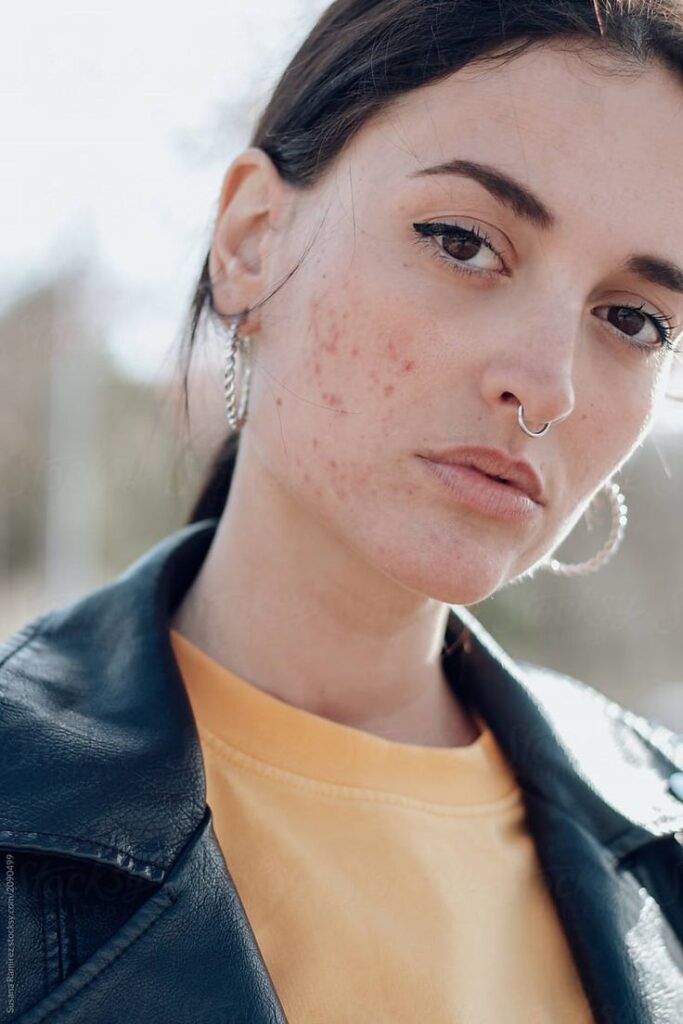
Can You Fade Pigmentation from Old Acne Scars?
Yes — pigmentation left behind from acne (post-inflammatory hyperpigmentation or PIH) often fades over time but can be accelerated with targeted treatments:
- Topical ingredients:
- Niacinamide
- Vitamin C
- Azelaic acid
- Alpha arbutin
- Laser treatments:
- Intense Pulsed Light (IPL)
- Q-switched lasers
- Chemical exfoliants:
- AHAs like glycolic or lactic acid
- BHAs like salicylic acid
Always wear sunscreen daily, as UV exposure can worsen pigmentation and slow healing.
How Many Treatments Will I Need?
There’s no one-size-fits-all answer. The number of sessions required depends on:
- The type and severity of your scars
- Your skin type
- Your response to treatment
In general, 3–6 sessions are common for noticeable improvement. Most clinics in Australia offer package deals for this reason.
Does Treating Old Scars Hurt?
Modern techniques are designed to be as comfortable as possible:
- Topical anaesthetic creams are used before microneedling, laser, or chemical peels
- Some discomfort is normal, but it’s usually manageable
What Can You Expect After Treatment?
- Redness or swelling for a few days
- Mild flaking or dryness
- Visible improvement typically starts around 4–6 weeks as new collagen forms
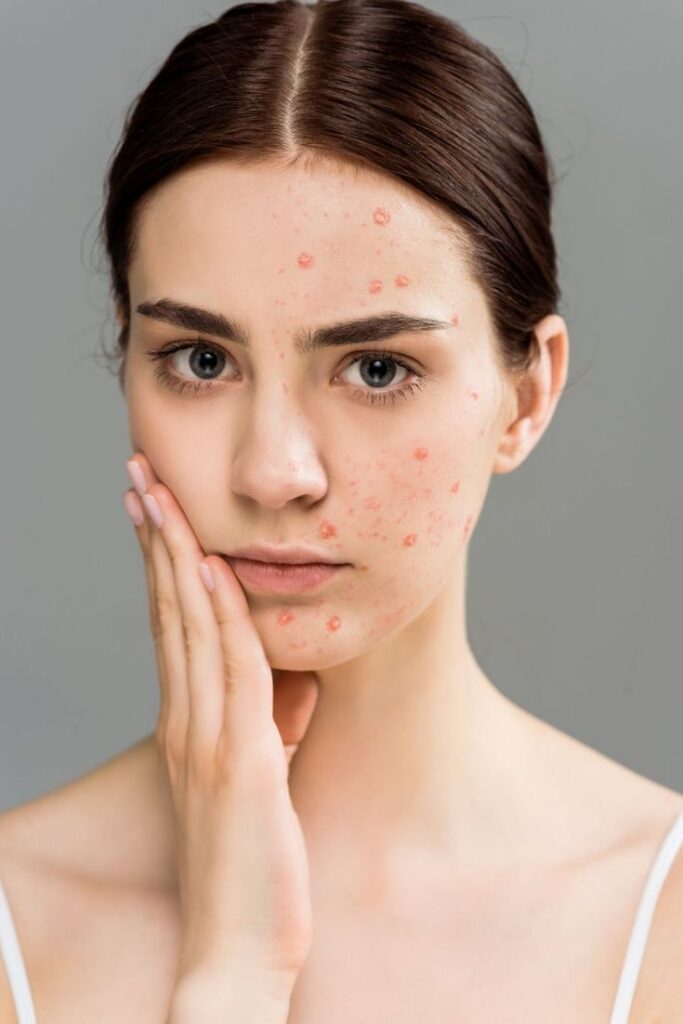
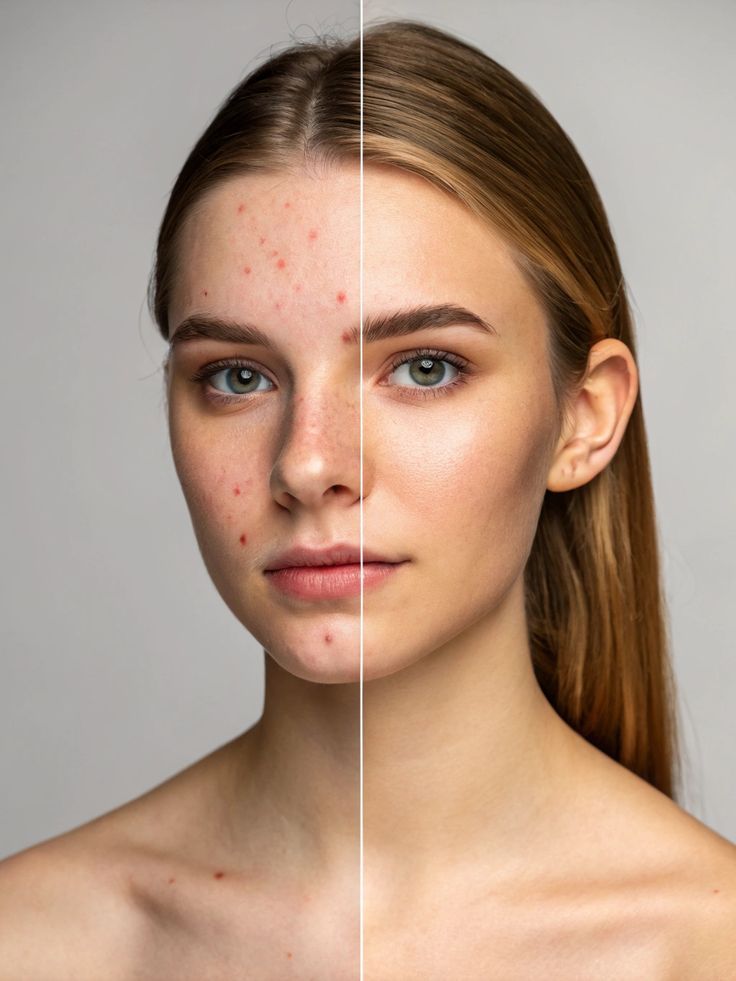
Home Care for Old Acne Scars
In addition to professional treatments, a good skincare routine can support your results:
- Cleanse gently and avoid harsh scrubs
- Moisturise daily
- Use antioxidant serums (like Vitamin C)
- Exfoliate 1–2 times a week with mild acids
- Never skip sunscreen
Where to Get Acne Scar Treatment in Australia
There are many reputable skin clinics in cities like Melbourne, Sydney, Brisbane, and Adelaide that offer advanced acne scar treatments. When choosing a clinic:
- Look for qualified practitioners
- Ask about before-and-after photos
- Read patient reviews
- Don’t be afraid to ask about treatment plans and costs
Can You Treat Scars at Any Age?
Yes — whether you’re in your 20s or 50s, it’s never too late to address acne scarring. Older skin may take slightly longer to respond, but with the right treatment plan, significant improvements are possible.
Final Thoughts
Old acne scars can be frustrating, but they don’t have to be permanent. With so many proven treatments available in Australia, you can absolutely improve the appearance of your scars and boost your confidence. From fractional laser to RF microneedling, there are solutions for every skin type, budget, and goal.
As always, consult a qualified skincare professional or cosmetic doctor to create a treatment plan that’s tailored to you. Your skin deserves to feel as smooth, even, and vibrant as you do.
At Medix Clinic, we offer a comprehensive range of skin and cosmetic treatments tailored to your needs. Our services include acne scarring in Melbourne, scar treatment in Melbourne, and radio frequency microneedling in Melbourne to promote skin repair and regeneration. We also provide professional skin needling in Melbourne, advanced skin tightening in Melbourne, and effective skin tag and mole removal in Melbourne. For pigmentation issues, we offer targeted pigmentation removal in Melbourne, and to restore your skin’s glow, we specialise in skin rejuvenation in Melbourne. Additionally, you can enhance your smile with our safe and effective LED teeth whitening in Melbourne
- Atrophic (Indented) Scars:
Can I Have Pigmentation Removal While Pregnant or Breastfeeding?
Pigmentation is a common concern, particularly for women, and it can become more pronounced during pregnancy or shortly after childbirth. Melasma (often called the “mask of pregnancy”), dark patches, and uneven skin tone may develop or worsen due to hormonal fluctuations. It’s natural to want to treat these changes — but when you’re pregnant or breastfeeding, safety becomes the top priority.
So, can you undergo pigmentation removal while pregnant or breastfeeding? The short answer is: it’s best to delay most treatments until after pregnancy and breastfeeding, but some gentle options may be considered safe. This article explores what causes pigmentation during this time, what treatments are safe or not recommended, and what alternatives you can explore in the meantime.

Why Does Pigmentation Occur During Pregnancy and Breastfeeding?
Hormonal changes are the primary culprit behind pigmentation issues during and after pregnancy. These hormonal shifts can stimulate an increase in melanin production, resulting in dark patches, most commonly on the face.
Common pigmentation conditions include:
- Melasma: A hormonal pigmentation condition that appears as symmetrical brown patches on the face.
- Linea nigra: A dark line that runs down the centre of the abdomen during pregnancy.
- Darkened nipples, underarms, or inner thighs: These changes are also linked to hormone-driven melanin production.
While some of these changes fade on their own after delivery, others — especially melasma — can linger for months or even years.
Is Pigmentation Treatment Safe During Pregnancy?
Most skin professionals and dermatologists recommend avoiding active pigmentation removal treatments during pregnancy, particularly those involving lasers, strong chemicals, or prescription-strength topicals.
Here’s why:
- Lack of safety data: There is limited research on the effects of pigmentation treatments during pregnancy, especially in relation to foetal development.
- Skin sensitivity: Pregnancy increases skin sensitivity and reactivity, meaning treatments that might normally be well-tolerated could lead to irritation or pigmentation worsening.
- Potential systemic absorption: Some chemical agents (like hydroquinone or retinoids) can enter the bloodstream and potentially affect the developing baby.
Treatments to Avoid During Pregnancy
- Laser Treatments (e.g. Pico, Q-switched, Fraxel):
While laser technology is highly effective for pigmentation, the general recommendation is to avoid it during pregnancy due to potential unknown risks and increased skin sensitivity. - Chemical Peels (medium to deep):
Strong acids like trichloroacetic acid (TCA) or glycolic acid in high concentrations are not considered safe. They can cause inflammation, irritation, and increased risk of pigmentation worsening. - Hydroquinone:
This common pigment-lightening agent has a high absorption rate through the skin and is not recommended during pregnancy due to a lack of safety data. - Retinoids (including tretinoin and retinol):
These are not considered safe for use during pregnancy as they may pose a risk to the developing baby, particularly if absorbed in significant quantities. - Intense Pulsed Light (IPL):
Like lasers, IPL carries a risk of irritation and hasn’t been proven safe during pregnancy.

Treatments That May Be Considered During Pregnancy
While aggressive treatments are off the table, there are gentler, pregnancy-safe options that can help manage pigmentation to a degree:
- Topical Vitamin C:
A powerful antioxidant that helps brighten the skin and reduce the appearance of pigmentation over time. Vitamin C serums are widely considered safe for use during pregnancy. - Azelaic Acid:
A naturally derived acid that’s safe for pregnant women and can help reduce melanin production with minimal irritation. It also has anti-inflammatory benefits. - Niacinamide (Vitamin B3):
This skin-soothing ingredient helps reduce uneven skin tone and may minimise dark spots. It’s gentle enough for pregnant and breastfeeding women. - Gentle Enzyme Peels or Fruit Acid Peels:
Treatments using papaya enzymes, lactic acid, or other fruit-based extracts in low concentrations can offer mild exfoliation without harsh side effects. - Professional Facials:
Some clinics offer facials specifically designed for pregnancy, focusing on hydration, gentle exfoliation, and pigment support using safe, non-invasive methods.
Always consult with a qualified dermatologist or skin therapist before beginning any treatment, even those considered “gentle” or “natural”.
Is It Safe to Treat Pigmentation While Breastfeeding?
When it comes to breastfeeding, the restrictions are often more relaxed than during pregnancy, but caution is still advised.
- Topical treatments: Many over-the-counter topical products such as vitamin C, niacinamide, and azelaic acid are safe while breastfeeding, as systemic absorption is low.
- Chemical peels: Mild peels using lactic acid or glycolic acid may be resumed after birth, depending on how your skin is reacting.
- Laser treatments: Some practitioners may approve certain types of laser therapy after pregnancy, but this should always be evaluated on a case-by-case basis and ideally postponed until breastfeeding is complete.
Ultimately, while there are more options available postnatally, it’s still best to proceed with professional guidance.
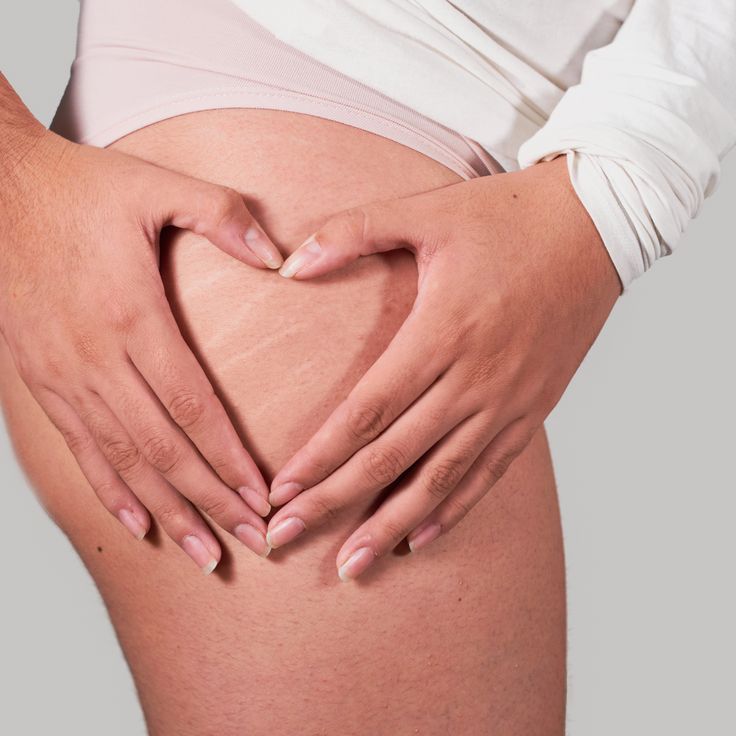
Managing Pigmentation During This Time
Even if you can’t undergo full pigmentation removal, there are proactive steps you can take to manage and minimise pigmentation during pregnancy and breastfeeding:
- Sun Protection Is Crucial
UV exposure is one of the biggest triggers of pigmentation — and it can worsen melasma and other conditions dramatically. Daily use of a broad-spectrum SPF 50+ is non-negotiable. Opt for physical (mineral) sunscreens containing zinc oxide or titanium dioxide, which are considered safe for pregnancy.
- Stick to a Gentle Skincare Routine
Avoid scrubbing, harsh exfoliants, or strong actives that could disrupt your skin barrier. Focus on calming, hydrating products and gentle pigment-supportive ingredients.
- Wait It Out – Time Can Help
Some pregnancy-related pigmentation fades naturally within months of giving birth. Unless the pigmentation is causing significant emotional distress, a “wait and see” approach may be the most appropriate strategy during pregnancy.
- Postpartum Plan
Once you’ve finished breastfeeding, you can work with a skin professional to create a tailored pigmentation removal plan that may include peels, laser therapy, or medical-grade topicals.
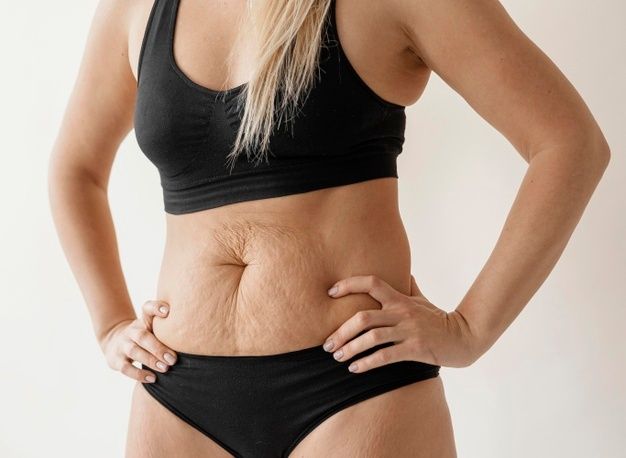
When to See a Professional
If you’re concerned about pigmentation during pregnancy or while breastfeeding, it’s wise to consult a:
- Dermatologist
- Qualified skin therapist
- GP with experience in women’s health and dermatology
They can confirm the nature of your pigmentation, provide reassurance, and recommend the safest management options during this sensitive period.
Conclusion: Can You Treat Pigmentation During Pregnancy or Breastfeeding?
In summary:
- During pregnancy, most pigmentation removal treatments are not recommended due to safety concerns, skin sensitivity, and lack of research. However, gentle topicals like vitamin C, niacinamide, and azelaic acid may help manage pigmentation to some extent.
- During breastfeeding, there are slightly more options available, but it’s still essential to choose treatments with low risk of systemic absorption and consult your healthcare provider before starting anything new.
- Sun protection and patience are your best tools during this time. Many pigment issues improve naturally after hormonal levels stabilise post-pregnancy.
Ultimately, while you may need to put off more intensive treatments, there are still safe and supportive ways to care for your skin and prevent pigmentation from worsening.
At Medix Clinic, we offer a comprehensive range of skin and cosmetic treatments tailored to your needs. Our services include acne scarring in Melbourne, scar treatment in Melbourne, and radio frequency microneedling in Melbourne to promote skin repair and regeneration. We also provide professional skin needling in Melbourne, advanced skin tightening in Melbourne, and effective skin tag and mole removal in Melbourne. For pigmentation issues, we offer targeted pigmentation removal in Melbourne, and to restore your skin’s glow, we specialise in skin rejuvenation in Melbourne. Additionally, you can enhance your smile with our safe and effective LED teeth whitening in Melbourne
Can Pigmentation Treatments Be Done on All Skin Types?
Skin pigmentation, whether it appears as freckles, sun spots, melasma, or post-inflammatory hyperpigmentation, is a common concern across all ethnicities and skin tones. As cosmetic treatments continue to evolve in Australia and beyond, the conversation around pigmentation removal becomes more nuanced — especially when it comes to treating diverse skin types safely and effectively.
In this article, we’ll explore the different types of pigmentation, how various skin tones respond to treatment, the risks involved, and the tailored approaches professionals use to deliver results while minimising complications.
Understanding Skin Types
Before delving into pigmentation treatments, it’s important to understand the Fitzpatrick Skin Type Scale — a system used to classify skin by its response to UV exposure. This scale ranges from Type I (very fair skin that burns easily) to Type VI (very dark skin that rarely burns). This classification helps skin professionals determine how skin might react to heat, light, and topical treatments.
- Types I–III (fair to light olive skin): Generally more responsive to pigmentation treatments with lower risk of post-treatment complications.
- Types IV–VI (medium to deep brown or black skin): More prone to post-inflammatory hyperpigmentation (PIH) or hypopigmentation if treatments are not handled correctly.
Different skin types need different approaches — what works safely on lighter skin may not be appropriate for deeper skin tones.
What Causes Pigmentation?
Pigmentation refers to discolouration or dark spots caused by the overproduction of melanin. It can be triggered by various factors, including:
- Sun exposure – UV radiation is one of the biggest contributors to pigmentation issues such as sun spots and freckles.
- Hormonal changes – Melasma is often linked to pregnancy or oral contraceptives.
- Skin trauma – Inflammatory conditions like acne or eczema can lead to PIH.
- Genetics – Some individuals are simply more prone to pigmentation due to hereditary factors.
Knowing the root cause is crucial in selecting the right treatment and avoiding potential complications, particularly for individuals with higher Fitzpatrick types.
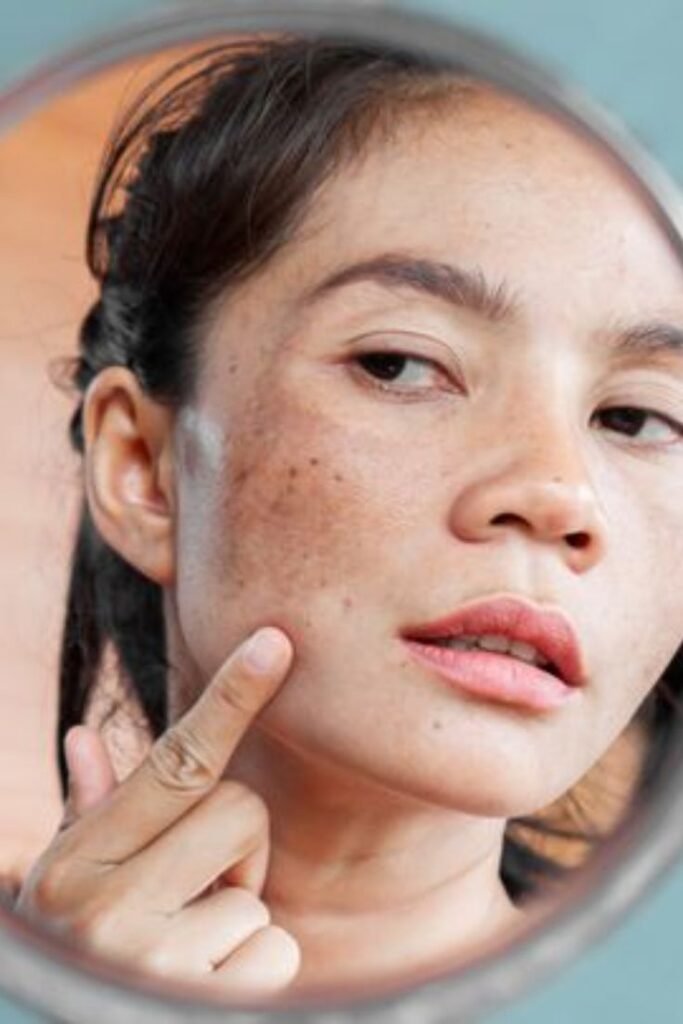
Pigmentation Treatments: What Are the Options?
There are several ways to treat pigmentation, including topical agents, chemical peels, laser therapies, and light-based treatments. Let’s break down each one in relation to various skin tones.
- Topical Treatments
Common topical ingredients used to lighten pigmentation include:
- Vitamin C
- Niacinamide
- Retinoids
- Hydroquinone
- Azelaic acid
- Kojic acid
Suitability for all skin types:
Topical treatments are generally safe across all skin types, although higher Fitzpatrick types should be monitored for irritation, which could lead to worsening pigmentation.- Chemical Peels
These involve the application of an acid solution to exfoliate and remove the upper layers of skin, stimulating cell turnover.
- Light peels (e.g., lactic acid, mandelic acid): Safer for deeper skin tones.
- Medium to deep peels (e.g., TCA): Typically reserved for lighter skin due to increased risk of PIH.
Caution for darker skin tones:
Deeper peels can trigger post-inflammatory pigmentation or scarring in Types IV–VI. Peels should be administered conservatively and by experienced clinicians.- Laser Treatments
Laser therapy is often seen as the gold standard for pigmentation, but not all lasers are created equal — and not all are safe for every skin tone.
- Q-switched Nd:YAG lasers (1064nm): Considered safe for darker skin when used correctly.
- Pico lasers: Newer technology with fewer side effects, suitable for a range of skin types.
- Fractional lasers: Effective but higher risk for melanin-rich skin.
- IPL (Intense Pulsed Light): Often effective on lighter skin tones but not generally recommended for darker skin due to risk of burns and PIH.
Laser caution for deeper skin tones:
Lasers that generate too much heat can damage melanin-rich skin. Only practitioners with specific experience in treating darker complexions should administer laser therapy.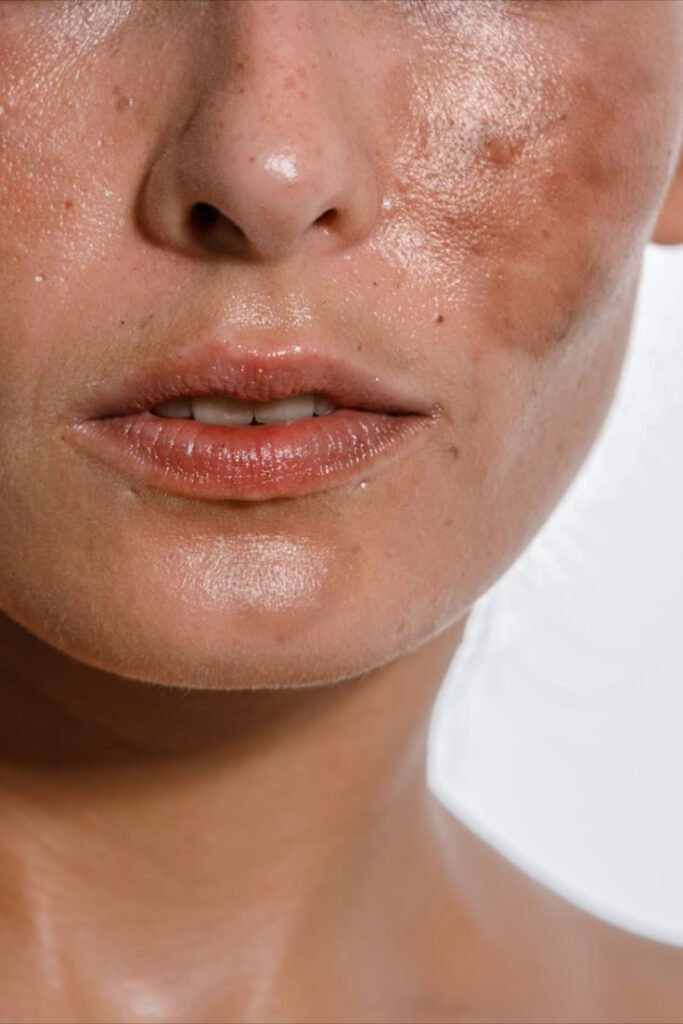
Can All Skin Types Be Treated?
The short answer is yes — with caution, customisation, and expertise.
Modern technology and a deeper understanding of skin biology mean that pigmentation can now be treated in most skin types. However, treating darker skin safely requires a modified approach, slower progress, and more conservative energy levels or chemical strengths.
When approaching pigmentation treatments, it’s essential to tailor the method based on the individual’s skin type. Here’s how different skin types are typically managed:
For Skin Types I to III (fair to light olive skin):
These skin types have a lower risk of developing post-inflammatory hyperpigmentation (PIH), making them more suitable candidates for a wider range of pigmentation treatments. Options such as intense pulsed light (IPL), chemical peels, and various laser therapies (including fractional lasers and Q-switched lasers) are generally well tolerated. Individuals with these skin types often see faster results and have fewer limitations or risks during treatment.For Skin Types IV to VI (medium to deep brown or black skin):
Darker skin tones are more prone to complications like PIH or hypopigmentation if treated incorrectly. As such, a more cautious approach is needed. Treatments that are generally safe for these skin types include Nd:YAG lasers (especially at 1064nm), pico lasers, and gentle chemical peels such as those using mandelic or lactic acid. Topical treatments like vitamin C, niacinamide, and azelaic acid are also commonly used. On the other hand, IPL, deeper chemical peels, and aggressive lasers should typically be avoided, as they carry a higher risk of adverse effects. Progress tends to be more gradual, but safe and long-lasting results can be achieved with the right care and expertise.Risks of Treating Pigmentation in Deeper Skin Tones
While outcomes can be excellent when done correctly, there are real risks when treating pigmentation in melanin-rich skin:
- Post-inflammatory hyperpigmentation (worsening dark spots)
- Hypopigmentation (loss of skin colour)
- Scarring
- Burns from inappropriate laser use
These complications are often a result of inappropriate technology, high settings, or lack of clinician experience.
How to Ensure Safe and Effective Treatment
- Choose a clinic with experience in treating diverse skin tones
Not all cosmetic clinics in Australia are equipped to handle melanin-rich skin. Look for practitioners who specifically mention treating skin of colour. - Get a professional skin consultation
Never proceed with pigmentation treatment without a proper assessment. The cause, depth, and type of pigmentation matter just as much as your skin type. - Ask about patch testing
Especially with lasers and chemical peels, a patch test can prevent full-face complications. - Follow pre- and post-care advice strictly
Using sunscreen, avoiding active skincare before treatment, and applying calming or barrier-repair creams after is essential. - Be patient
Slower, staged treatments are usually safer for darker skin tones — don’t rush the process.
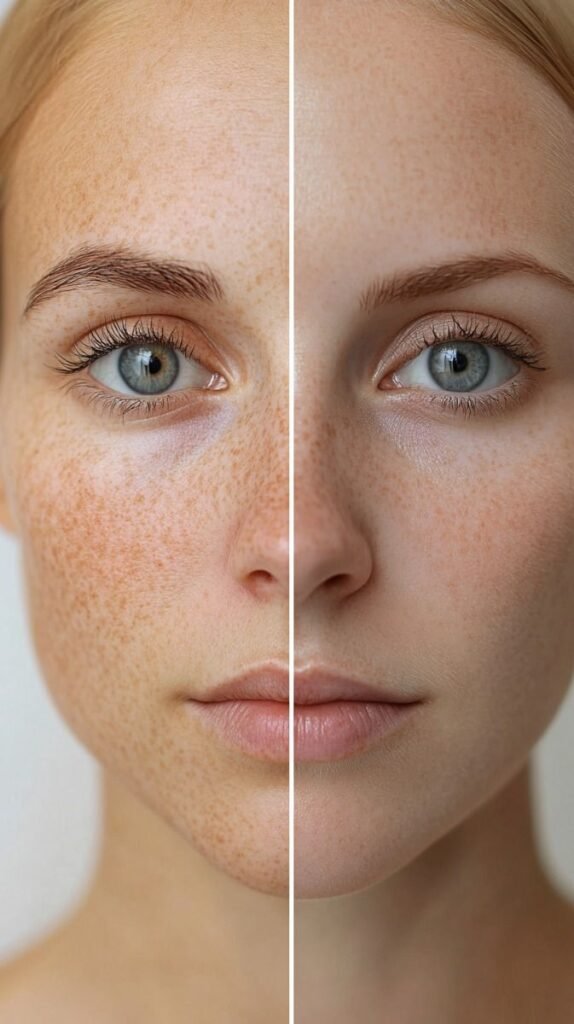
Are Results the Same Across All Skin Types?
Results can vary, depending not just on the treatment used, but on:
- The depth and type of pigmentation
- The person’s natural skin healing process
- Hormonal balance and lifestyle factors
- The level of sun protection used during and after treatment
Deeper skin tones may require more sessions to achieve desired results, but with proper care, they can experience significant improvement with minimal side effects.
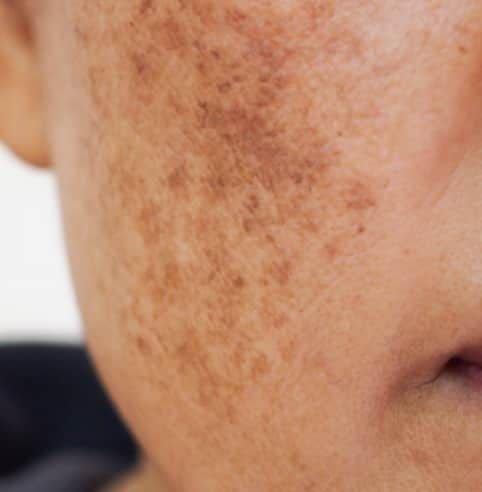
Final Thoughts
Pigmentation treatments can indeed be done on all skin types — but not all treatments are suitable for every skin. While lighter skin types generally have more options and lower risks, darker complexions require a more thoughtful and cautious approach.
In Australia, where diversity is growing and people of all backgrounds seek cosmetic solutions, the demand for inclusive skincare is increasing. The best outcomes come from personalisation, professional experience, and patience. Whether you’re dealing with melasma, sun damage or acne scars, there’s almost always a safe and effective pathway available — regardless of your skin tone.
At Medix Clinic, we offer a comprehensive range of skin and cosmetic treatments tailored to your needs. Our services include acne scarring in Melbourne, scar treatment in Melbourne, and radio frequency microneedling in Melbourne to promote skin repair and regeneration. We also provide professional skin needling in Melbourne, advanced skin tightening in Melbourne, and effective skin tag and mole removal in Melbourne. For pigmentation issues, we offer targeted pigmentation removal in Melbourne, and to restore your skin’s glow, we specialise in skin rejuvenation in Melbourne. Additionally, you can enhance your smile with our safe and effective LED teeth whitening in Melbourne
is LED Teeth Whitening Worth It? A Complete Guide for Melbourne Smiles
Introduction
A bright, white smile never goes out of style — and in Melbourne, more and more people are turning to LED teeth whitening to achieve it. But with so many options available, it’s natural to wonder: Is LED teeth whitening actually worth it? In this comprehensive guide, we’ll explore how LED whitening works, how it compares to other treatments, what it costs in Melbourne, and whether it’s the right fit for your smile.
What is LED Teeth Whitening?
LED teeth whitening is a non-invasive cosmetic dental procedure that uses a special whitening gel combined with an LED light to break down stains and lighten the shade of your teeth. Unlike abrasive toothpastes or traditional peroxide-only methods, LED-assisted whitening is designed to speed up the bleaching process without causing excessive sensitivity or enamel damage.
The process generally involves applying a hydrogen peroxide or carbamide peroxide gel to the teeth, then exposing it to a blue LED light. The light accelerates the whitening agent, allowing it to break apart stain molecules more effectively and safely.
LED Whitening vs. Traditional Whitening Methods
- In-Clinic vs. Take-Home Kits
Traditional teeth whitening can be done using whitening trays at home, whitening strips, or in-chair bleaching sessions at the dentist. LED whitening can be part of both in-clinic and at-home procedures, but in-clinic options often deliver faster and more noticeable results. - Safety
LED whitening is considered safe when done under professional supervision. Unlike UV light, LED light does not emit heat or harmful radiation, making it a gentler option for those with sensitive gums or teeth. - Speed & Effectiveness
While traditional whitening methods may take weeks to show results, professional LED whitening can brighten your teeth by several shades in just one session. Home kits using LED light can also be effective but tend to work more gradually.


Is LED Whitening Safe?
Yes, LED whitening is generally safe for most people — particularly when performed by a trained dental professional. The LED light itself is not harmful, and the whitening gels used are formulated to minimise tooth and gum irritation.
However, some people may experience mild temporary side effects, such as:
- Tooth sensitivity
- Gum irritation
- Dry mouth
If you already have sensitive teeth, you may want to discuss this with your dentist before undergoing LED whitening. Using toothpaste for sensitive teeth before and after your treatment can help reduce discomfort.
How Long Do the Results Last?
The results from LED whitening can last anywhere from 3 months to 12 months, depending on your lifestyle and oral hygiene habits.
Factors that influence longevity:
- Coffee, tea, red wine, and tobacco use
- Diet (highly pigmented foods)
- Oral hygiene (brushing, flossing, dental cleanings)
To maintain results, many people choose to have top-up sessions every 6–12 months, or use at-home whitening pens or trays as part of their routine.
Who is a Good Candidate for LED Whitening?
Most adults with healthy teeth and gums can safely undergo LED whitening. However, you may not be a good candidate if you have:
- Dental restorations (crowns, veneers, fillings) on visible teeth
- Active tooth decay or gum disease
- Extremely sensitive teeth
- Deep intrinsic stains (like those from antibiotics)
Children, pregnant or breastfeeding individuals, and those with untreated dental issues should avoid whitening until cleared by a dentist.
DIY LED Whitening Kits vs. Professional Treatments
DIY LED kits are widely available online and in pharmacies, but they vary in quality, safety, and effectiveness.
Pros of DIY kits:
- More affordable
- Convenient for home use
Cons:
- Lower concentrations of whitening agents
- Risk of misuse or uneven results
- No professional supervision
If you choose to use a DIY kit, look for products that are TGA-approved in Australia, follow instructions carefully, and monitor for any signs of irritation or sensitivity.

Where to Get LED Whitening in Melbourne
Melbourne is home to a wide range of dental clinics, cosmetic salons, and aesthetic professionals offering LED teeth whitening. When choosing a provider, look for:
- Registered dental professionals
- Transparent pricing
- Before & after photos
- Positive client reviews
- Aftercare support
Avoid unlicensed pop-up providers or services that seem “too cheap to be true” — your smile’s health is worth the investment.

How to Maintain Whitened Teeth
To extend the results of your LED whitening, follow these tips:
- Avoid staining drinks (or use a straw)
- Rinse or brush after meals
- Use whitening toothpaste (2–3 times per week)
- Schedule regular dental cleans
- Consider a top-up session every 6–12 months
Some Melbourne clinics offer whitening memberships or maintenance packages, which can be a great value for long-term care.
Final Thoughts
LED teeth whitening has become a popular, effective way for Melburnians to boost their confidence and enhance their smiles. While DIY kits offer convenience, professional treatments remain the gold standard for safety, speed, and impressive results.
If you’re considering LED whitening in Melbourne, consult with a qualified dentist or cosmetic professional to ensure the treatment is tailored to your needs. With proper care and the right provider, your smile can shine brighter than ever — without risking your dental health
At Medix Clinic, we offer a comprehensive range of skin and cosmetic treatments tailored to your needs. Our services include acne scarring in Melbourne, scar treatment in Melbourne, and radio frequency microneedling in Melbourne to promote skin repair and regeneration. We also provide professional skin needling in Melbourne, advanced skin tightening in Melbourne, and effective skin tag and mole removal in Melbourne. For pigmentation issues, we offer targeted pigmentation removal in Melbourne, and to restore your skin’s glow, we specialise in skin rejuvenation in Melbourne. Additionally, you can enhance your smile with our safe and effective LED teeth whitening in Melbourne
- In-Clinic vs. Take-Home Kits
How Do I Start Treating Scars?
Scars are a natural part of the healing process, but for many Australians, they can also be a source of emotional and physical discomfort. Whether caused by acne, surgery, burns, or injury, scars vary widely in appearance and impact. Fortunately, modern treatments offer several effective options to minimise and improve scarring. In this comprehensive guide, we’ll walk you through how to start treating scars, from understanding scar types to choosing the right therapies and aftercare.
Understanding the Types of Scars
Before seeking treatment, it’s crucial to identify the type of scar you have. Each type responds differently to various therapies.
Hypertrophic Scars
Raised and red, these scars stay within the boundary of the original wound. They’re common after burns, cuts, or surgeries.
Keloid Scars
Larger and more aggressive than hypertrophic scars, keloids grow beyond the original injury. They are more common in darker skin tones and may recur after removal.
Atrophic Scars
Depressed or pitted scars, often resulting from acne or chickenpox. They include boxcar, ice pick, and rolling scars.
Contracture Scars
Usually due to burns, these scars tighten the skin and can restrict movement if over joints or muscles.
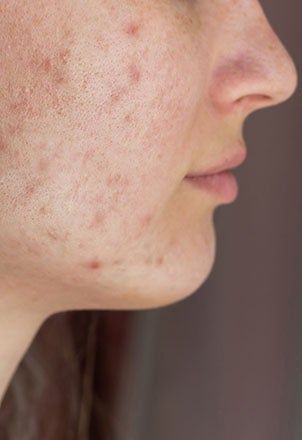
Stretch Marks (Striae)
While not technically scars, stretch marks are considered a form of dermal scarring due to rapid stretching of the skin, such as during pregnancy or weight gain.
Step 1: Assess Your Scar
Begin by evaluating your scar’s:
- Age (new or old)
- Type (raised, flat, pitted, discoloured)
- Location (visible or hidden, over joints, on the face, etc.)
- Sensitivity (itchy, painful, or tight)
If your scar is recent, it’s best to wait until the wound is fully healed before beginning active treatments. This can take 4–8 weeks depending on the wound.
Step 2: Consult a Professional
Visit a qualified skin specialist or dermatologist for a proper assessment. Many Australian clinics offer free or affordable consultations. Your clinician will:
- Diagnose the type of scar
- Check for underlying issues (e.g., pigmentation, infection, or abnormal healing)
- Recommend a tailored treatment plan
Step 3: Explore Treatment Options
Topical Treatments
Ideal for early intervention and mild scarring:
- Silicone gels or sheets: Help flatten and fade scars
- Vitamin E or C serums: Promote healing and reduce pigmentation
- Retinoids: Aid in cell turnover (especially for acne scars)
- Over-the-counter creams: May contain ingredients like onion extract or niacinamide

Professional Clinical Treatments
For moderate to severe scarring, professional treatments in Melbourne and across Australia include:
Microneedling (Skin Needling)
- Tiny needles create micro-injuries to stimulate collagen
- Great for atrophic acne scars, stretch marks, and surgical scars
- Often combined with radiofrequency (RF Microneedling) for enhanced results
Laser Therapy
- Fractional laser: Targets specific skin areas, improves texture and tone
- CO2 laser: Deeper resurfacing for severe scarring
- Pulsed dye laser: Reduces redness in hypertrophic scars
Chemical Peels
- Uses acids like glycolic, salicylic, or TCA to exfoliate and encourage skin renewal
- Effective for pigmentation and shallow acne scars
Subcision
- A needle is inserted under the skin to break fibrous scar tissue (often used for rolling acne scars)
Dermal Fillers
- Temporary volume added to depressed scars
- Commonly used for boxcar and rolling acne scars
Cryotherapy
- Freezing treatment for raised scars or keloids
- May be combined with corticosteroid injections
Some medically necessary treatments may be eligible for Medicare rebates, particularly for post-surgical scars or burns. It’s worth asking your GP about a referral.
Step 5: Create a Long-Term Care Routine
Scar improvement takes time, and consistency is key. Whether using at-home products or undergoing professional treatment, support your healing with good skincare practices:
Daily Care Tips:
- Use SPF 30+ sunscreen daily to prevent hyperpigmentation
- Keep the area moisturised to promote elasticity
- Avoid picking or scratching the scar
- Use gentle cleansers and avoid harsh scrubs
Post-Treatment Care:
- Follow your provider’s instructions carefully
- Avoid sun exposure after laser or needling sessions
- Use calming products like aloe vera or hyaluronic acid
Step 6: Track Progress and Adjust
Take regular photos of your scar under consistent lighting to monitor changes. Keep a journal to record:
- Products used
- Professional treatments undertaken
- Reactions or improvements observed
If results plateau, revisit your specialist. Sometimes combination therapies or a change in approach yields better outcomes.
Common Myths About Scar Treatment
“Scars will disappear completely.”
False — While scars can fade significantly, they often don’t vanish entirely.
“Expensive treatments are always better.”
Not always — Consistency with simple methods (like silicone sheets) can be just as effective for certain scars.
“You must wait a year before treating a scar.”
Some treatments, like silicone gel or light peels, can begin as soon as the skin is closed and healed (after 4–6 weeks).
Emotional and Psychological Considerations
Scars can affect confidence, self-esteem, and emotional wellbeing. In some cases, individuals feel anxious or embarrassed about visible scars. If your scars impact your mental health, consider speaking with a psychologist or joining support groups.
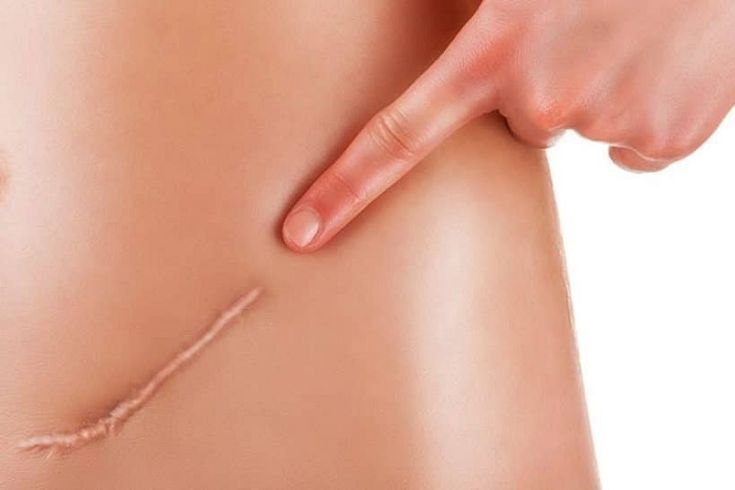
Final Thoughts
Starting scar treatment might feel overwhelming, but it begins with understanding your scar and seeking the right guidance. In most cases, a combination of medical advice, home care, and professional therapies leads to the best outcome.
The key is patience, consistency, and choosing the right treatment path based on your individual skin and scar type. Whether you’re dealing with acne scars, post-surgical marks, or stretch marks, there are modern, science-backed options available right here in Australia.
At Medix Clinic, we offer a comprehensive range of skin and cosmetic treatments tailored to your needs. Our services include acne scarring in Melbourne, scar treatment in Melbourne, and radio frequency microneedling in Melbourne to promote skin repair and regeneration. We also provide professional skin needling in Melbourne, advanced skin tightening in Melbourne, and effective skin tag and mole removal in Melbourne. For pigmentation issues, we offer targeted pigmentation removal in Melbourne, and to restore your skin’s glow, we specialise in skin rejuvenation in Melbourne. Additionally, you can enhance your smile with our safe and effective LED teeth whitening in Melbourne
Scar Treatment During Pregnancy: What You Need to Know
Pregnancy brings about a multitude of changes in a woman’s body, many of which are natural and expected. Among the more concerning issues for some women is how to manage existing scars or newly forming scars during this period. Whether you’re dealing with surgical scars (such as from a caesarean section or past surgeries), stretch marks, acne scars, or other types of skin trauma, it’s essential to understand what scar treatments are safe during pregnancy and which should be avoided.
Understanding Scars and Pregnancy
Scars form when the skin heals after an injury. Depending on the depth and severity of the injury, a scar may appear flat, raised (hypertrophic or keloid), or sunken. During pregnancy, your skin undergoes changes due to hormonal fluctuations, increased blood flow, and stretching. These changes may alter how scars appear or heal.
Common types of scars during pregnancy include:
- Stretch marks: While technically not scars, stretch marks are a form of dermal scarring due to rapid skin stretching.
- C-section scars: These surgical scars require post-operative care and, for many women, ongoing treatment to improve appearance and reduce discomfort.
- Existing scars: Acne scars, injury scars, or surgical scars from prior procedures may become more noticeable as the skin changes.
Hormonal Impact on Scar Healing
Hormones such as oestrogen and progesterone fluctuate significantly during pregnancy and can affect skin elasticity and healing. Oestrogen, in particular, plays a role in wound healing. However, during pregnancy, the skin may be more prone to pigmentation changes, which can cause scars to darken or become more visible.
Additionally, some women may develop melasma, a condition that causes dark patches on the skin, making scars more prominent.

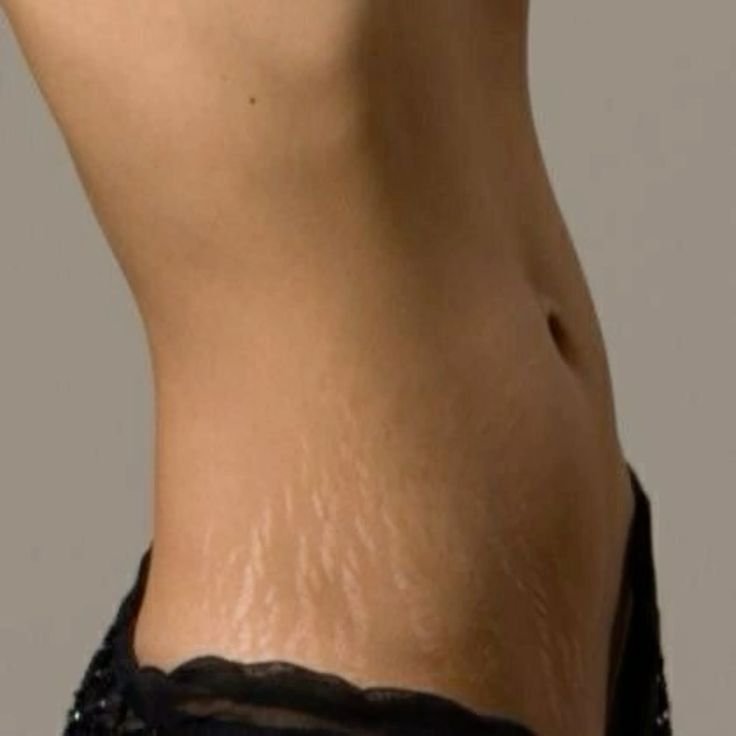
Safe Scar Treatment Options During Pregnancy
Safety is paramount during pregnancy, and this applies to skincare as much as diet or exercise. Many over-the-counter scar treatments contain active ingredients that may be unsafe for pregnant women. However, there are still several safe and effective methods to manage scars during pregnancy.
Silicone Gel and Silicone Sheets
Silicone-based products are considered the gold standard for non-invasive scar treatment. They are generally safe to use during pregnancy and help flatten and fade scars over time.
Benefits:
- Hydrates the scar tissue
- Reduces redness and itching
- Softens raised scars
Application: Apply a thin layer of silicone gel or use silicone sheets over the scar for several hours a day. They’re odourless, non-irritating, and suitable for sensitive skin.
Moisturisers and Emollients
Keeping the skin well-hydrated is essential. Products containing ingredients like cocoa butter, shea butter, and vitamin E are often recommended, though there’s limited scientific evidence for their scar-reducing properties.
Note: While vitamin E is commonly used, some studies suggest it may cause contact dermatitis in certain individuals. It’s best to test a small patch before applying widely.
Gentle Massage
Massaging the scar with a moisturiser or oil can improve blood flow and break down excess collagen that causes raised scars. This method is especially helpful for C-section scars once they have healed sufficiently (usually after 6–8 weeks).
Sun Protection
UV exposure can cause scars to darken. Pregnancy already increases susceptibility to hyperpigmentation, so using a broad-spectrum sunscreen (SPF 30 or higher) is crucial, even on cloudy days.
Tip: Choose mineral-based sunscreens with zinc oxide or titanium dioxide, which are safer for use during pregnancy.
Treatments to Avoid During Pregnancy
While it may be tempting to reach for stronger treatments, many contain ingredients that are not safe for use during pregnancy.
Retinoids (Vitamin A Derivatives)
Retinoids, commonly found in acne and anti-ageing products, are highly effective for scar treatment but are not safe during pregnancy. Oral isotretinoin (such as Roaccutane) is especially dangerous, but even topical forms should be avoided.
Hydroquinone
Used for skin lightening and hyperpigmentation, hydroquinone has high systemic absorption. Though conclusive data on harm is lacking, it is not recommended during pregnancy as a precaution.
Salicylic Acid and Beta Hydroxy Acids (BHAs)
Low concentrations (<2%) are sometimes deemed safe, but stronger formulations—especially chemical peels—should be avoided.
Laser Treatments and Microneedling
These procedures involve skin resurfacing and can be painful, increase risk of infection, and trigger pigmentation changes due to hormonal shifts. Most dermatologists recommend postponing these treatments until after pregnancy.
Special Considerations for C-Section Scars
For women undergoing a planned or emergency caesarean section, scar management becomes an important postpartum concern. While many treatments can wait until after delivery, certain practices can support healing even during pregnancy:
- Nutrition: A diet rich in protein, vitamin C, zinc, and iron supports skin repair.
- Post-operative care: Keeping the incision clean and dry reduces the risk of infection and poor healing.
- Scar massage: Once healed, gentle massage can prevent adhesion and improve scar appearance.
If you’re planning a C-section and concerned about scarring, speak with your obstetrician about your options. They may suggest specific surgical techniques or closure methods that reduce visible scarring.
After Pregnancy: When Can You Resume Advanced Treatments?
Once your baby is born and if you’re not breastfeeding (or depending on the treatment), you may be eligible for more aggressive scar treatments such as:
- Laser therapy
- Chemical peels
- Microneedling
- Topical retinoids
If you’re breastfeeding, it’s still important to discuss your treatment plans with your doctor, as some products can be absorbed into breast milk.
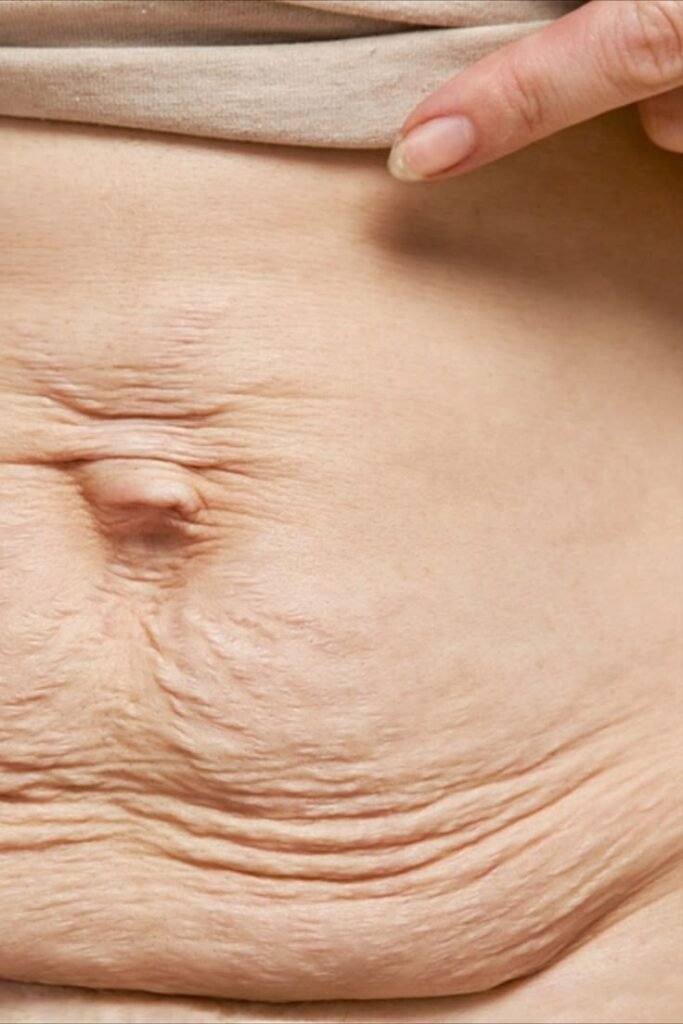
When to See a Dermatologist
If your scar is causing pain, itching, or emotional distress—or if it becomes red, swollen, or infected—it’s time to consult a healthcare professional. A dermatologist can help determine the best course of action and which treatments are safe based on your pregnancy stage.
Final Thoughts
Scar treatment during pregnancy requires careful consideration of both effectiveness and safety. While many treatments must be paused until after childbirth, there are still numerous options available to support healthy skin and minimise scarring. By focusing on gentle, non-invasive approaches and consulting your healthcare provider, you can manage scars effectively without compromising your health or your baby’s well-being.
Remember: every body heals differently. Be patient with the process and kind to yourself as your body undergoes this incredible transformation.
At Medix Clinic, we offer a comprehensive range of skin and cosmetic treatments tailored to your needs. Our services include acne scarring in Melbourne, scar treatment in Melbourne, and radio frequency microneedling in Melbourne to promote skin repair and regeneration. We also provide professional skin needling in Melbourne, advanced skin tightening in Melbourne, and effective skin tag and mole removal in Melbourne. For pigmentation issues, we offer targeted pigmentation removal in Melbourne, and to restore your skin’s glow, we specialise in skin rejuvenation in Melbourne. Additionally, you can enhance your smile with our safe and effective LED teeth whitening in Melbourne